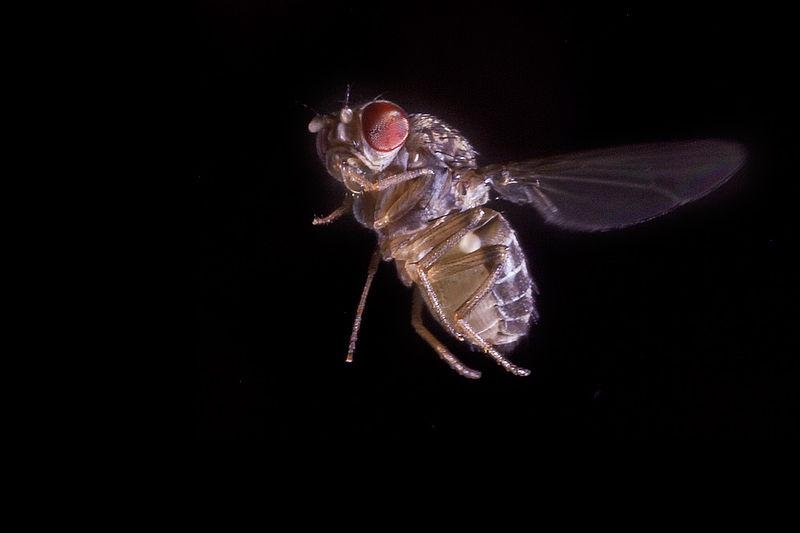A fruit fly. (F Muijres/U of Washington)
SEATTLE, April 11 (UPI) -- How do flies elude predators? More importantly, how do they avoid giant human hands -- or fly swatters?
To find out, scientists from the University of Washington and Delft University of Technology in the Netherlands got up close and personal with fruit flies, filming them and their aerodynamic tendencies via super high-speed cameras.
What researchers learned is that flies maneuver like Maverick or Iceman.
"Although they have been described as swimming through the air, tiny flies actually roll their bodies just like aircraft in a banked turn to maneuver away from impending threats," explained Michael Dickinson, a professor at the University of Washington. "We discovered that fruit flies alter course in less than one one-hundredth of a second, 50 times faster than we blink our eyes, and which is faster than we ever imagined."
To test the flies fright and flight skills, 40 of 50 fruit were sent through a long cylinder. As the flies crossed a certain point, laser beams triggered a projected image of a predator, causing the flies to take evasive action -- and they do. The tiny creatures execute turns with incredible precision and speed.
In all, the lab's infrared cameras captured the details of 3,566 wing beats, the result of 92 separate fruit fly banked-turn escapes. The research was recently published in Science Magazine.
The reaction time is perhaps what's most impressive, the researchers say, executing a barrel roll turn 50 times faster than the blink of an eye.
To do so, scientists conclude the flies possess supremely complex motor-sensory circuiting -- the equivalent intelligence of mouse squeezed down into a minuscule brain.
Next, scientists want to better understand the actual circuiting. Said Dickinson: "We’re very interested in how the brain can control motion on such a fine scale."
[Delft University of Technology]
[The Los Angeles Times]















